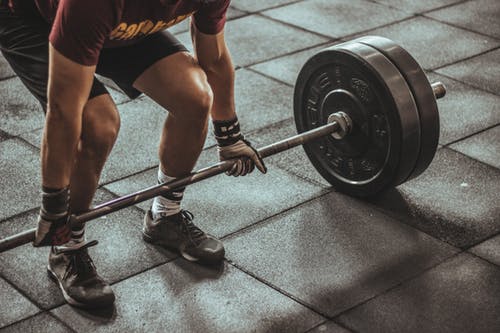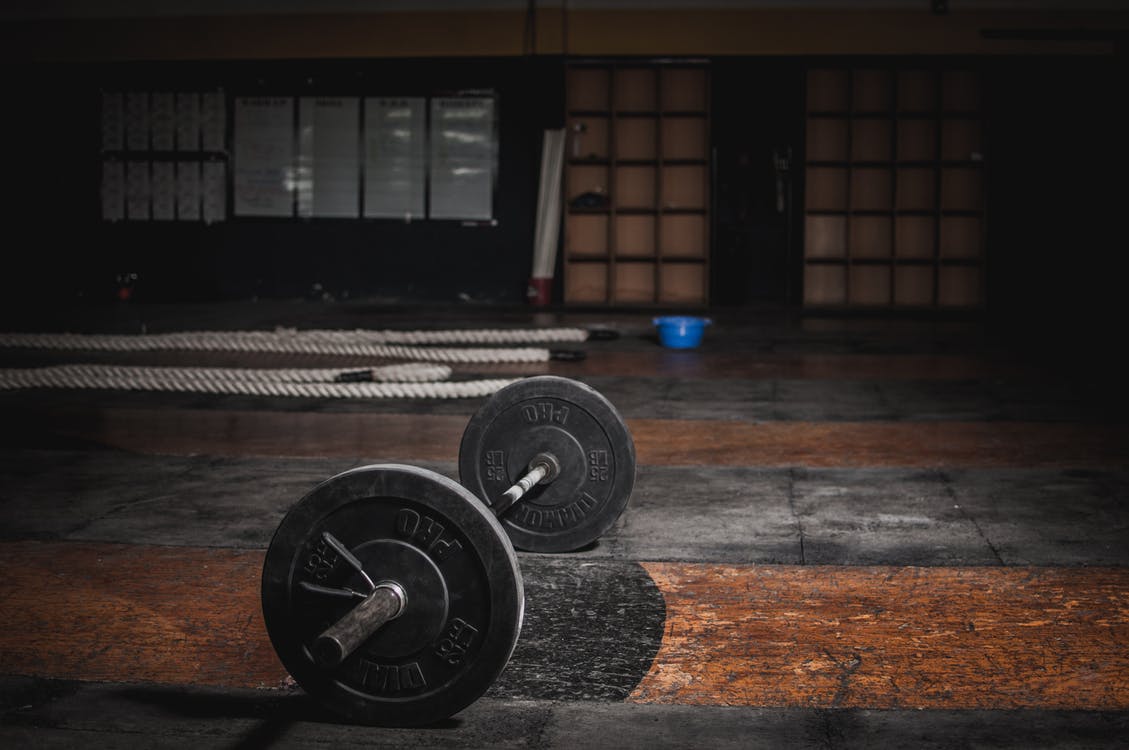Over the course of several posts (http://wp.me/p1XfMm-4A , http://wp.me/p1XfMm-4F , http://wp.me/p1XfMm-4L , and http://wp.me/p1XfMm-4S ), we’ve covered taking a systematic approach to the training of both absolute beginners as well as national-caliber Olympic lifters. The idea has been to gradually increase the resistance, perfect technique, develop the weak parts of the lifts, and regularly rotate lots of variations of the exercises. The combination of all this develops a stronger, more fit, and more injury resistant lifter. Between the desire to train like the Bulgarians and the rise of CrossFit, you don’t see training being done like this anymore.
Up until now, all the training programs assume that the athlete has no deficiencies. The purpose of this post is to provide some sample training programs to develop some of the more common deficiencies seen in the competition lifts. These include:
- Not locking out in jerk or snatch
- Losing the bar in front snatch/clean (weak pull)
- Losing the bar behind (letting bar get away during pull)
- Losing jerk in front (weak drive)
Not Locking Out in the Jerk or Snatch:
Failing to adequately lock out the elbows during the jerk or snatch results in two problems for an Olympic lifter. First, it disqualifies the lift. Second, it makes the bar more difficult to control when it is overhead. There are two causes for this error, the first is that there may be a combination of not pulling the bar high enough and not dropping under it quickly enough to receive it on locked out arms. The second is that there may be a deficiency with the strength of the triceps.
The pull/drop part of the problem will be addressed by lifts from the hang. The triceps part will be addressed with a combination of overhead squats and push presses. While a lot of bodybuilding triceps work might seem logical, it’s not terribly specific to Olympic lifting and it’s questionable how much transfer there will be from them to the Olympic lifts.
Below is a sample week of a workout to address the lockout:
Day One:
P. Sn, h, AK 3x3x70%
Cl. Sn, h, AK 3x3x70%
Sn. Pulls, h, AK + Cl. Sn, h, AK 3×4+3×70%
B. Sq 3×8-12×75%
Good Mornings, St 3×8-12
Day Two:
P. Clean, h, AK + Sp. Jerk 3×3+2×70%
Cl. Clean, h, AK + Sp. Jerk 3×3+2×70%
F. Sq + Sp. Jerk 3×6+3×70%
Mil Press 3×8-12
Day Three:
Push Press, Sn Grip 3x6x70%
Push Press, Sn Grip + O. Sq 3×6+6×70%
Cl. Sn, h, AK 3x3x60%
Sn. Pulls, 3 positions 3×1+1+1×75%
Day Four:
Push Jerk 3x6x70%
F. Sq + Push Jerk 3×6+6×70%
Cl. Clean, h, AK + Sp. Jerk 3×3+2×60%
Clean Pulls, 3 positions 3+1+1+1×75%
Day Five:
Cl. Sn 3 positions 3×1+1+1×60%
Cl. Clean + Sp Jerk, 3 positions 3x(1+1+1)+2×60%
Losing the Bar in Front:
When a lifter loses the bar to the front, or has to jump forward to “catch” the bar, this is generally because the barbell isn’t being pulled high enough. So there are several ways to address this. First, heavy pulls need to be introduced. This strengthens the movement. It’s normal for lifters to lift the bar higher during the pull exercise than during the actual competition lifts, so doing this with greater than the competition weights may have some transfer. Second, the power variations need to be used. Again, because the bar is received in a quarter squat during the power variations it must be pulled to a greater height – which is ideal for training this deficiency. Third, lifts should be done from the hang. Again, this emphasizes the need for a higher pull.
A sample workout to address this with both the clean and the snatch is below:
Day One:
Sn. Pulls, h, AK + P. Sn, h, AK 3×6+3×70%
Sn. Pulls, h, AK + Cl. Sn, h, AK 3×6+3×70%
Sn. Pulls, h, AK 3x4x90%
B. Sq 3×8-12×70%
Good Mornings, St 3×8-12
Day Two:
P. Clean, h, AK + Sp Jerk 3×3+2×70%
Cl. Clean, h, AK + Sp Jerk 3×3+2×70%
Cl. Pulls, 3x4x90%
F. Sq 3×4-6×75%
Military Press 3×8-12
Day Three:
P. Sn, h, AK 3x3x60%
Cl. Sn, h, AK 3x3x60%
Sn. Pulls, h, AK 3x2x100%
Day Four:
Cl. Pulls, h, AK + Cl. Clean, h, AK 3×4+3×60%
Cl. Clean, h, AK + Sp. Jerk 3×3+2×60%
Cl. Pulls, h, AK 3x2x100%
Day Five:
P. Sn, h, AK + Cl. Sn, h, AK 3×3+2×60%
P. Clean, h, AK + Cl. Clean, h, AK + Sp. Jerk 3×3+3+2×60%
Losing the Bar Behind/Being Knocked Back:
When the barbell is lost behind the lifter (snatch) or when it knocks the lifter backwards (clean), this is generally because the lifter allowed it to travel too far away from the body during the explosion. This is rectified by employing variations that require a faster transition from the start to receiving the bar. This includes lifts from the hang with the bar above the knees, and lifts from the hang with the bar at hip height. When this problem exists, it is advisable to discontinue the pull assistance exercise, as it could make the problem worse.
A sample week of workouts that addresses this problem with both the clean and the snatch is below:
Day One:
Cl. Sn, h, AK 3x3x70%
Cl. Sn, h, AK (hold squat position for two counts) 3x3x60%
O. Sq 3x6x60%
B. SQ 3×8-12×70%
Good Morning, St 3×8-12
Day Two:
Cl. Clean, h, AK 3x3x70%
Cl. Clean, h, AK (hold squat position for two counts) 3x3x60%
F. Sq + Sp. Jerk 3×6+3×70%
F. Sq 3x6x70%
Military Press 3×8-12
Day Three:
Cl. Sn, h, H 3x3x60%
P. Sn, h, AK + Cl. Sn, h, AK 3×3+3×60%
Cl. Sn, h, AK + O. Sq 3×1+1×70%
Day Four:
Cl. Clean, h, H+ Sp. Jerk 3×3+3×60%
P. Clean, h, AK + Cl. Clean, h, AK 3×3+3×60%
Sp. Jerk 3x3x75%
Day Five:
P. Sn, h, AK + Cl. Sn, h, AK + O. Sq 3×3+3+3×60%
P. Clean, h, AK + Cl. Clean, h, AK + Sp. Jerk 3×3+3+2×60%
Losing the Jerk in Front:
When the jerk is lost in front of the body, this is typically due to a weak drive. In other words, the bar isn’t driven to a great enough height for the lifter to get underneath it adequately. It can also be due to the mistake of not positioning the bar over the hips. Besides performing the jerk itself, this is addressed by adding jerk drives and by performing jerks from behind the neck. Jerk drives are a partial movement, the lifter performs the dip and drive but does not attempt to get under the bar. The jerk behind the neck is a normal split jerk, but the bar starts out on the back of the lifter’s shoulders. The issue with this lift is that the lifter can handle pretty heavy weights, so they may not be able to lower the weight safely to the back of the shoulders – in that case jerk boxes should be used for this. A sample workout emphasizing this problem with the jerk might look like this:
Day Two:
Cl. Clean + Sp. Jerk 3×3+2×70%
Jerk Drives 3x6x80%
Push Jerk 3x6x60%
F. Sq 3x6x70%
Military Press 3×8-12
Day Four:
P. Clean + Sp. Jerk 3×3+2×70%
Jerk, BN 3x3x60%
F. Sq + Sp Jerk 3×1+3×70%
The list of common errors in this post is not meant to be everything that a lifter can run into. The solutions also aren’t the only ones out there. However, the intent was to show how to employ a variety of exercises to attack weaknesses.


